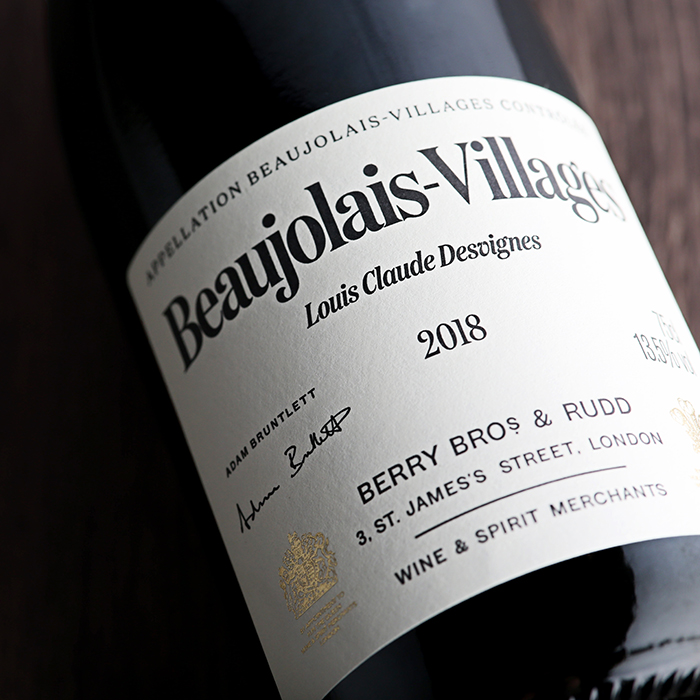Just landed: our new Beaujolais-Villages
Author: Will Heslop

The French word gouleyant has no direct English translation – quaffable or easy-drinking don’t do it justice – but look no further than our inaugural own-label Beaujolais-Villages for an accurate definition. Fresh, fruit-driven and moreish, with exceptional length and the granitic grip usually the preserve of wines from the 10 Beaujolais crus, it was made for us by the Desvignes siblings of the fabled Domaine Louis Claude Desvignes in Morgon.
Louis-Benoît and Claude-Emmanuelle Desvignes are eighth-generation winemakers steeped in the region’s heritage. As organisers of Bien Boire en Beaujolais (an annual celebration of the region’s wines), they’re also at the vanguard of a group of young winemakers whose skill and ambition are today redefining how Beaujolais is perceived.
The grapes for this wine hail from a south-facing parcel of 60-year-old vines in the village of Jullié, overlooking the cru vineyards of Juliénas. The thin, sandy soil here is mottled pink by the granite just beneath. The Desvignes showed a characteristically light touch in the winery to allow this stellar terroir to shine: semi-carbonic maceration in concrete vats, no oak whatsoever and minimal filtration.
The resulting wine – our 2018 Own Selection Beaujolais-Villages – will hit it off with virtually any dish, from pizza to jerk chicken, but its gastronomic soulmate is charcuterie. Therefore, to celebrate the wine’s launch, it will be open to taste alongside a selection of cured meats from Tempus Charcuterie in our London Shop, at 63 Pall Mall, on the afternoon of 5th July (find out more here).
Stocks are finite so don’t delay; make hay with the Gamay.
The old vines provide concentrated strawberry fruit, while the high altitude and granite soil give grip and mineral freshness. Made without oak to preserve the pristine fruit character, the floral top notes, sweet red-berry fruit and crunchy finish make this an irresistible wine.



Carbonic maceration makes the wine taste of … carbonic maceration.
Nothing against that – I’m sure the wine is excellent – but it’s contradictory to say carbonic maceration lets the terroir shine.
It’s a valid point that carbonic maceration can produce generic wines. For our Own Selection Beaujolais-Villages, the Desvignes used a technique more accurately described as “semi-carbonic maceration”, whereby whole bunches ferment in open-topped (rather than closed) tanks. In an open vat, alcoholic fermentation begins simultaneous to carbonic maceration, and the maceration itself is longer and more extractive. In the best instances, this results in more structured, complex wines that combine the most attractive hallmarks of “pure” carbonic maceration – minimal tannins, bright floral and berry aromas – with characteristics specific to the site from which they hail.